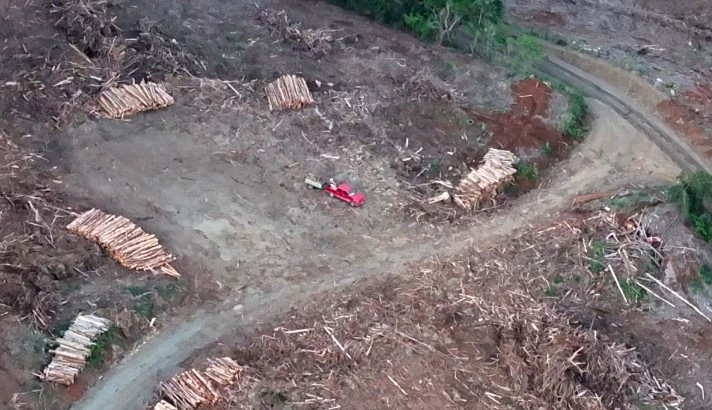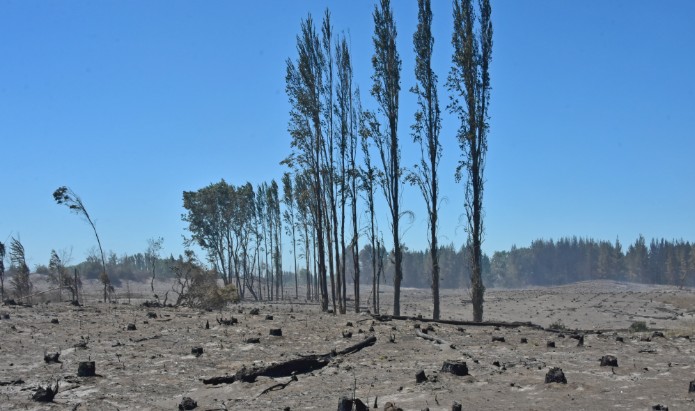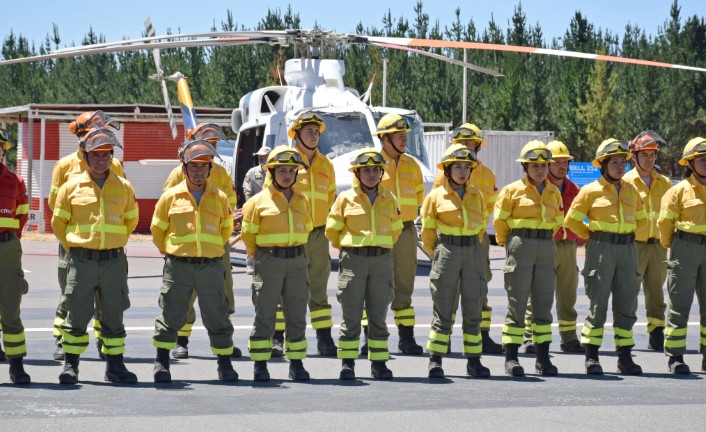UdeC and CMPC: An Alliance for Sustainable Development and Innovation
From talent development and applied research to environmental conservation, the collaboration between the University of Concepción and CMPC stands as a model of academia-industry partnership with national impact, fostering innovation, strengthening professional training, driving economic and social development, and aligning higher education with industrial and societal needs.
Since 2019, joint work on projects combining science, technology, and innovation with a model of early engagement, continuous feedback, and mutual benefits has been part of this significant collaboration agreement, structured around three pillars:
- Development of the industry of the future.
- Talent development.
- Creation and acceleration of entrepreneurship and innovation.
In this regard, Felipe Alcalde Arrau, Manager of Competitiveness and Innovation at CMPC, stated, "The collaboration with the University of Concepción has been essential to advancing our challenges in competitiveness, sustainability, and technological innovation. It has been a years-long partnership, which we hope continues to strengthen."
DEVELOPMENT OF THE INDUSTRY OF THE FUTURE
Through Digital Transformation, Bioeconomy, and Forest Health programs, the alliance has enabled the implementation of high-impact technological solutions.
In the early years of this collaboration, seven initiatives stood out, involving 11 researchers, eight professionals, and six undergraduate and graduate students in this field. One of these led to the development of the forest fire management platform, Gesfire, created by the Data and Artificial Intelligence Center (CDIA) of the Faculty of Engineering, UdeC. This platform improves wildfire management by supporting decision-making, providing operators with real-time, consolidated data on rural fires—including weather conditions, mapping, firefighting resources, detection, and fire progression—all on a single screen.
"This software reduces cognitive load for dispatchers, allowing them to visualize information both graphically and in form format. It strongly adapts to their tasks, lowering stress and facilitating easier collaboration," explained Marcela Varas, Faculty of Engineering professor and project leader.
Another technological development, called "Controller Factory," relates to new control strategies for environmental and production improvements at the Nacimiento Plant, led by Faculty of Engineering professor Juan Pablo Segovia.
The project integrated knowledge from operational units, CMPC's digital innovation group, and UdeC researchers, introducing advanced control algorithms (APC) implemented in distributed control systems (DCS), validated and put into operation. CMPC's digital innovation group developed mechanisms to gather data, provide necessary inputs, and propose new improvement challenges.
Juan Pablo Segovia described this initiative as disruptive: "This joint work has improved both environmental and economic performance in Lines 1 and 2 of CMPC's Nacimiento Plant. Simply put, we applied mathematics to their expertise to complement our scientific models."
Bioeconomy
In Bioeconomy, 13 initiatives were proposed, with nine executed, involving 12 researchers and 18 professionals. Progress included sustainable materials like 3D filaments made from industrial waste, N95 mask prototypes, and concrete made from cellulose and paper byproducts—all supported by CMPC's technical and strategic input.
Using pulp mill waste to produce sustainable concrete and cement is the focus of another UdeC-CMPC project, part of their collaborative efforts.
ECOncrete—valorizing cellulose waste for concrete production—is led by Faculty of Engineering professor Luis Merino, who noted, "Since 2014, we've researched cellulose waste. Published theses on its use laid the groundwork for this project, which aims to transform this environmental liability into value-added concrete and mortar."
Additionally, CMPC contributed $6 million pesos to launch the Biobío Green Hydrogen Alliance, forming a regional consortium for energy efficiency and CO₂ mitigation.
TALENT DEVELOPMENT
This pillar includes Training and Talent programs. Training featured three initiatives: Data Science for plant process engineers, the Beyond Ambassadors corporate innovation program for 120 CMPC professionals (led by the Faculty of Engineering's Innovation Unit), and others.
Talent programs fostered early engagement, diversity networks, and specialized workshops, bridging academia and industry. Over 170 UdeC students completed internships and theses across CMPC’s Environmental, Innovation, and Finance divisions nationwide.
CREATION AND ACCELERATION OF ENTREPRENEURSHIP AND INNOVATION
Entrepreneurship and innovation efforts include the Conexión CMPC Challenge, held three times, engaging 120+ students in solving real-world company and community problems.
"Technology Exploration" connected 58 national and international firms, with 11 patent-pending solutions.
The High Tech Challenge mobilized 150+ students in innovation workshops, with the Faculty of Engineering’s "Feria Libre" project winning. The "Reactiva tu Pyme" entrepreneurship school trained 86 SMEs in leadership, business models, and marketing, later expanding with a CMPC-funded seed capital fund. Both programs were organized by IncubaUdeC.
In 2023, a new UdeC-CMPC agreement pledged joint construction of the Los Ángeles Campus, featuring an Innovation Center and tech labs to boost local entrepreneurship and technology transfer.
Ultimately, this alliance has enabled the University to apply scientific and technological knowledge to real industry challenges—highly valued by CMPC. "We believe this collaborative model is key to accelerating strategic sector modernization and driving sustainable national development through technology," emphasized Felipe Alcalde Arrau.
Source:Faculty of Engineering, UdeC

















